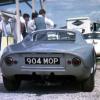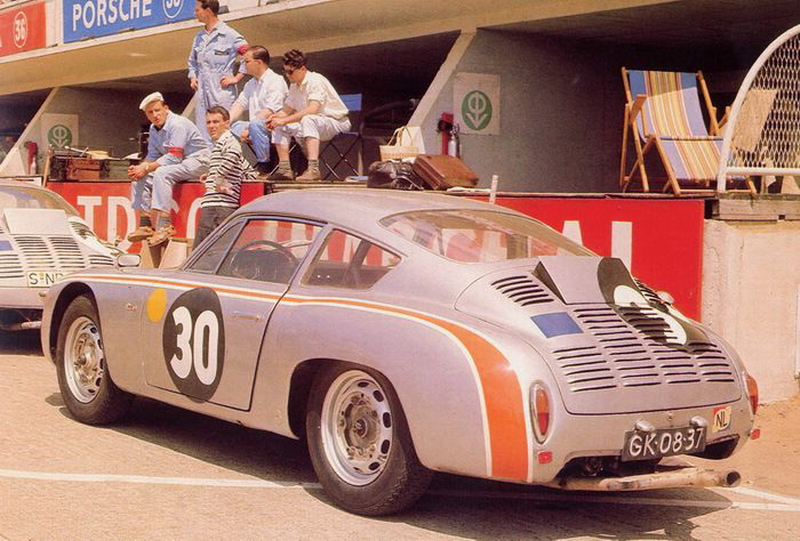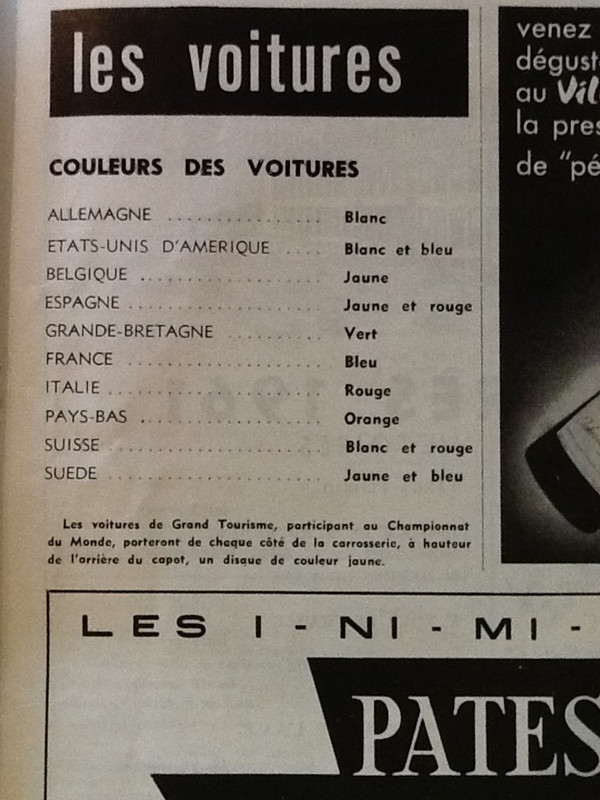I can only hope that this information taken from the 1964 Le Mans programme is on the correct path to help Rob's quest (and also relevant for 2 years earlier).
page 63 has this...
les voitures
couleurs des voitures
allemagne gris argent
etats-unis dámerique blanc et bleu
belgique jaune
grand bretagne vert
france bleu
italie rouge
pays-bas orange
suisse blanc et rouge
les voitures de grand tourisme, participant au Championnat du Monde, porteront de chaque cote de la carrosserie, a hauteur de l'arriere du capot, un disque de colour jaune.
That for those of us who struggle with English, becomes (via a certain search engine)...
the cars colors
germany silver gray
united states of america white and blue
belgium yellow
great britain green
france blue
italy red
netherlands orange
swiss white and red
Grand touring cars participating in the World Championship will carry a yellow disc on each side of the body, at the rear of the bonnet.
If there's a similar page in the 1962 programme then please let it be known.
Stephen


















